
Page Description
Explore the concept of metaphor, including its use in literature and everyday language to convey complex ideas and add depth to communication.
5 British Post Office scandal: a ‘miscarriage of justice’ (Drop off)
At Plain English, we make English lessons for the modern world.
— Today’s full English lesson, including a free transcript, can be found at: https://plainenglish.com/651
— Learning English should be fun! That’s why our lessons are about current events and trending topics you care about: business, travel, technology, health, science, politics, the environment, and so much more. Our free English lessons always include English expressions and phrasal verbs, too.
— Learn even more English at PlainEnglish.com, where we have fast and slow audio, translations, videos, online English courses, and a supportive community of English learners like you. Sign up free at PlainEnglish.com/Join
— Aprende inglés gratis en línea con nuestro curso de inglés. Se habla a una velocidad lenta para que todos entiendan. ¡Aprende ingles con nosotros ahora! | Aprenda Inglês online grátis com o Plain English, a uma velocidade menor, para que todos possam entender.
Contact: E-mail jeff@plainenglish.com | WhatsApp +1 312 967 8757 | Facebook PlainEnglishPod | Instagram PlainEnglishPod | Twitter @PlainEnglishPod
A metaphor is when we use the word for one thing to describe the characteristics of another.
For example, if we say ‘This city is a jungle’, we mean that the city is a wild and dangerous place.
Een metafoor is wanneer we het woord voor één ding gebruiken om de kenmerken van een ander ding te beschrijven.
Als we bijvoorbeeld zeggen “Deze stad is een jungle”, bedoelen we dat de stad een wilde en gevaarlijke plaats is.
According to the Oxford dictionary:
A metaphor is a word or phrase
- used to describe somebody or something else,
- in a way that is different from its normal use, in order
- to show that the two things have the same qualities and
- to make the description more powerful.
For example: She has a heart of stone;
the use of such words and phrases
- a game of football used as a metaphor for the competitive struggle of life,
- the writer’s striking use of metaphor.
Oxford Advanced Learner's dictionary (8th edition 2010)
Metaphor is a figure of speech that involves comparing two seemingly unrelated concepts or ideas, often using the words “is” or “as,” to create a vivid or imaginative image or description. The key points of a metaphor include:
Comparison: A metaphor involves comparing two unlike things or concepts, which may be abstract or concrete, in order to illustrate a point or create a new perspective.
Imagination: Metaphors are used to create imaginative and evocative descriptions by drawing on familiar or relatable concepts to help convey meaning in a more vivid or memorable way.
Figurative language: Metaphors are a form of figurative language, as they go beyond literal meaning and use language in a creative and non-literal manner to convey a deeper or more nuanced understanding.
Symbolism: Metaphors often use symbols or symbolic language to represent ideas or concepts, allowing for rich and layered interpretations.
Subjective interpretation: Metaphors are open to interpretation and can be understood differently by different individuals, as they rely on the reader’s or listener’s personal experiences, perspectives, and associations.
Impact: Metaphors can be powerful rhetorical tools that engage the reader or listener’s emotions and imagination, and can enhance communication, evoke emotions, or convey complex ideas in a succinct and memorable way.
Common usage: Metaphors are commonly used in literature, poetry, speeches, advertising, and everyday language to create imagery, provide clarity, and make language more engaging and memorable.
Overall, metaphors are a form of figurative language that involves creative comparisons to convey meaning in a vivid, imaginative, and symbolic manner, allowing for subjective interpretation and impactful communication.
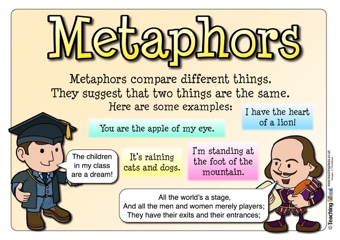
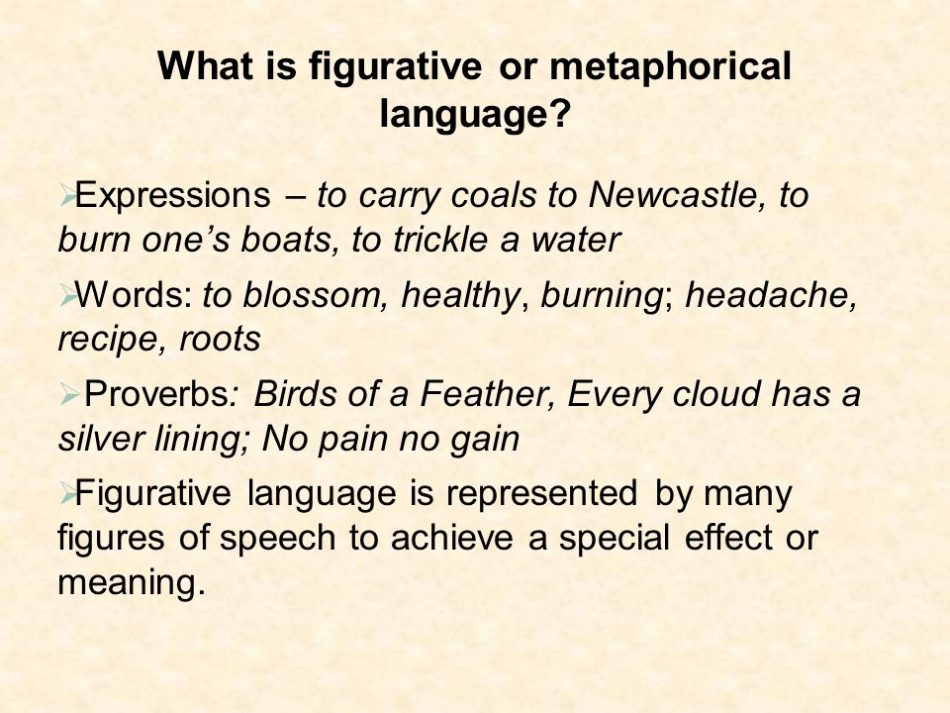
Metaphor Examples
His words cut deeper than a knife. Words don’t materialize into sharp objects. …
I feel the stench of failure coming on. Failure isn’t fun but it doesn’t smell. …
I’m drowning in a sea of grief. …
I’m feeling blue. …
She’s going through a rollercoaster of emotions.
The cast on his broken leg was a plaster shackle.
Laughter is the music of the soul.
America is a melting pot.
Her lovely voice was music to his ears.
Common Examples of Metaphor
Laughter is the best medicine.
She is just a late bloomer.
Is there a black sheep in your family?
His heart of stone surprised me.
I smell success in this building.
He’s buried in a sea of paperwork.
There is a weight on my shoulder.
Time is money
Definition of Metaphor
A metaphor is a figure of speech that makes a comparison between two non-similar things. As a literary device, metaphor creates implicit comparisons without the express use of “like” or “as.” Metaphor is a means of asserting that two things are identical in comparison rather than just similar. This is useful in literature for using specific images or concepts to state abstract truths.
No man is an island.
That actor is a tall drink of water.
Age is a state of mind.
Last night I slept the sleep of the dead.
The new parents had stars in their eyes.
The criminal has blood on his hands.
There is a garden in her face.
Our family is a patchwork quilt.
She has been living in a bubble.
Your argument is a slippery slope.
We found it under a blanket of sand.
I’m pleased to meet your better half.
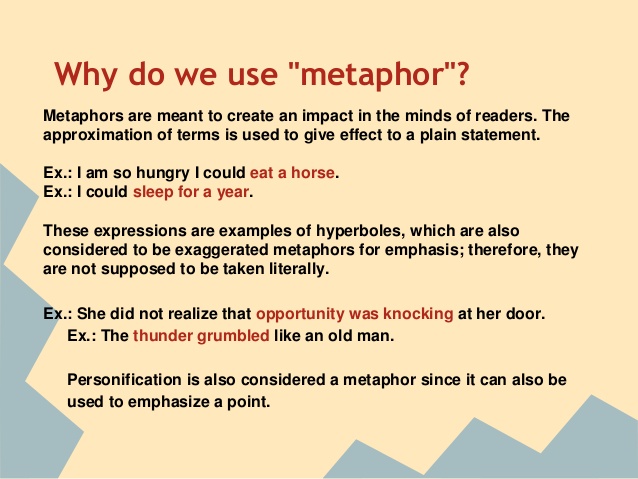


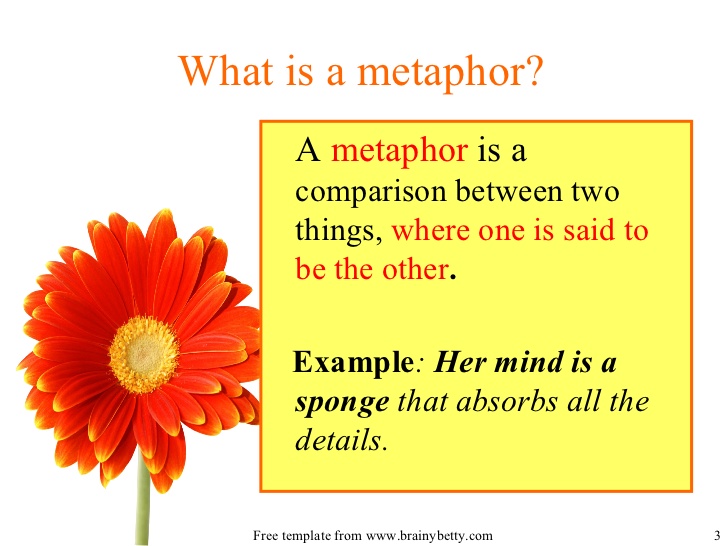
1 Science can answer moral questions | Sam Harris
2 The Story Of The Blind Prince – Buddhist Views On Obsessive Love
20 apr. 2020
Dare to do. Motivation
The Story Of The Blind Prince – Buddhist Views On Obsessive Love
is another Dare to do. Motivation story about forgiveness, true love and honesty please let me know in the COMMENTS BELOW what you think and as always:
STAAAAY BLESSED 🙂
Listen to your heart…be happy…don’t give up and always believe!
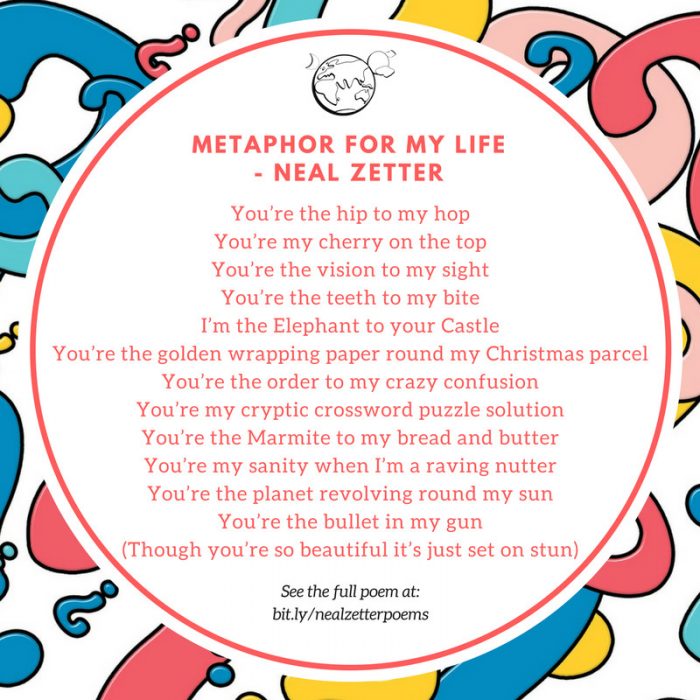
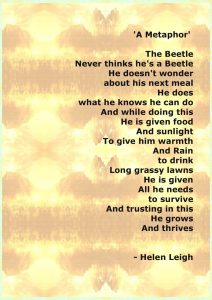
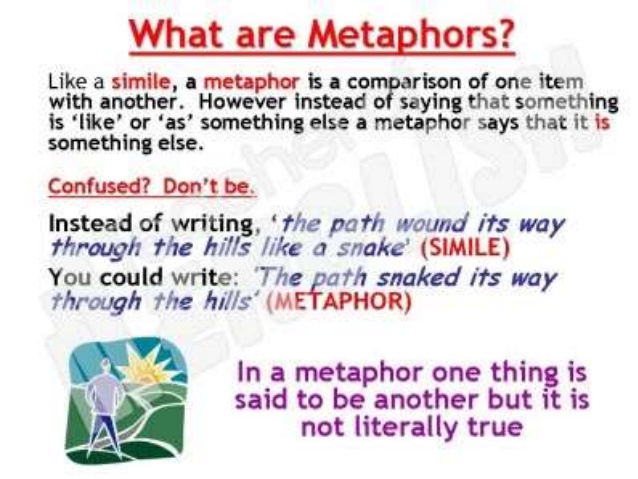
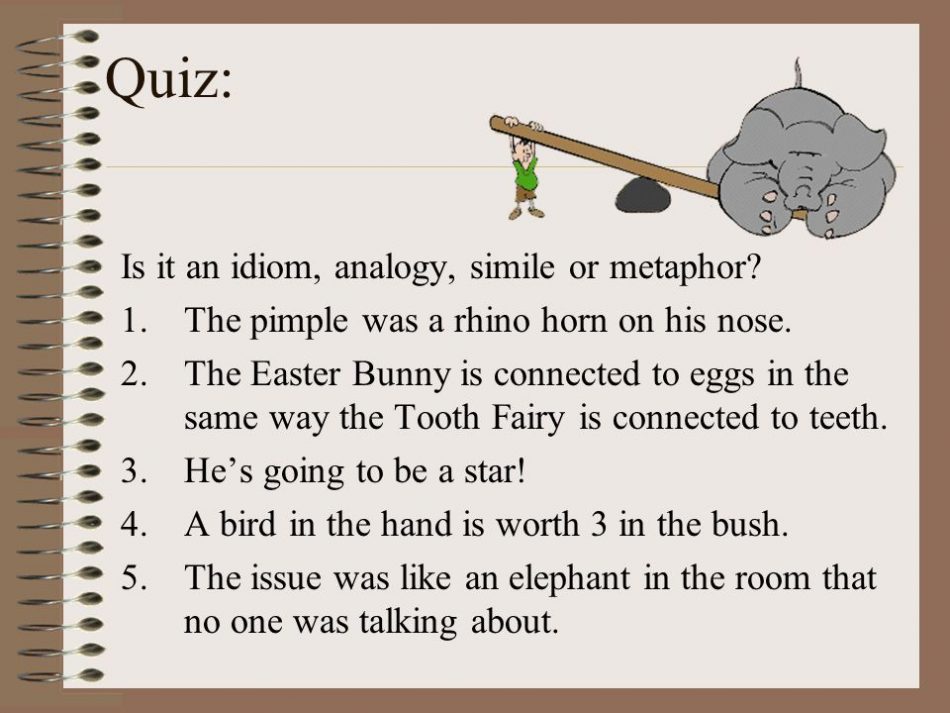
3 Using metaphors to speak English more fluently
26 jan. 2016
TRANSCRIPT
Hi. I’m Gill from www.engvid.com, and today in this lesson, we’re going to look at metaphors, which are a different way of using language, really. But these metaphors are used a lot in everyday life. You could also call them idioms. They’re a little bit like idioms. And there are a lot of them.
But I just want to mention that there are metaphors and similes, and they’re similar in a way, but different. So, a metaphor says one thing is another thing. So, for example, in my first sentence, here: “Thanks for helping me – you’re an angel!” Okay? An angel is supposed to be a good person who helps people, but you’re talking here to an ordinary human being and calling them an angel because they’ve helped you. Okay. So, you’re saying: “You are an angel.” So, “you” equals “angel”. So, in a metaphor, it’s saying something is or somebody is something else. The other type of style of speaking is called a simile, and we’ll have another lesson on that; a separate lesson. And with a simile, you don’t say “A” is “B”, you say “A” is like “B”. So, with this one, you’d say: “You are like an angel.” Or: “You are as good as an angel.” But with the metaphor: “You are an angel.” So that’s the difference between metaphors and similes. So, please look at the other lesson about similes to see some examples of that. Okay?
Right, so concentrating on metaphors. “Thanks for helping me – you’re an angel!” if someone helps you. You could say this to somebody if they help you. “Thank you – you’re an angel.” It’s a nice compliment, a nice thing to say to somebody who’s helped you.
Second example: “The people in that club are just a bunch of sheep!” Okay? “A bunch”, that’s just sort of casual, informal word. “A bunch”, it means a group. A group. A group of people. You can have a bunch of flowers. That’s the normal use for “bunch”. Bunch of flowers, several flowers held together. But this is people who are being called sheep. They’re not literally sheep. People are not sheep; sheep are animals, people are humans. But this is saying the people in that club are a bunch of sheep. They’re behaving like sheep, because what sheep do, they all stick together, they all stay together, and they all follow each other. They all do the same thing. So this happens with people sometimes. They… They don’t have their own independent ideas; they just copy what everybody else does. So that’s the meaning of this… This one. The people in that club are just a bunch of sheep. Okay.
This one is probably more of a positive thing to say to somebody: “You’re such a busy bee!” It maybe sounds a bit patronizing, perhaps. But if someone is really busy, you can say they’re a busy bee. And the two b’s is a sort of poetic thing, again. But busy bee. The thing about bees is… The bees that buzz around, they… They’re always busy. They’re collecting pollen from flowers, and going back to the hive, and they’re making honey. So they seem to be busy all the time. So, to call a person a busy bee is that they are also running around and doing things, and being very busy and working a lot, and never stopping. Okay.
Here’s another one: “London is a melting pot of people and cultures.” Okay, so London is a melting pot. It’s not literally a pot with food in it. It’s a melting pot of people and cultures. The people and cultures aren’t being thrown into a pot. London, the city, just contains a lot of people from different cultures and different countries. Okay.
Here’s a good one from if you’re… If you’re working in an office or somewhere and you have some ideas, and you tell them to your boss: “I had some good ideas but my boss shot them down.” Okay? So to shoot something is like with a gun, [shooting noises], all these good ideas that you’ve just produced, and your boss doesn’t like them or he doesn’t like you maybe. But he shoots down your… All your ideas, and they come falling to the floor. Not literally. Again, it’s not literally true. Not literally true. It’s just a picture in your mind, like your boss with a gun, shooting down your ideas. So he doesn’t like any of your ideas, he just shoots them. Destroys them. So, you had some good ideas, but my boss shot them down. Okay?
4 Using SIMILES to improve your everyday English
14 feb. 2016
Do you know what a ‘simile’ is? Do you know the difference between a metaphor and a simile? Similes are expressions that compare two different things. We use these expressions to make our spoken and written English sound clearer, nicer, and more poetic at the same time. Native speakers use similes often. Most of the time you will be able to understand the meaning from the context, but it is good to know some common similes so that you can start using them yourself! In today’s lesson, I’ll teach you the difference between a simile and a metaphor, and go over some examples of similes I hear in everyday life in the UK. Similes are a fun part of the English language, so join me for this lesson and test your understanding of these expressions with the quiz!
http://www.engvid.com/using-similes-t…
TRANSCRIPT
Hi. I’m Gill at engVid, and the lesson we’re having today is about similes. And just to explain what a simile is: It’s when you compare two different things. Okay? Now, there’s another lesson that we have about metaphors and at the beginning of that one, we explain the difference between metaphors and similes. So I’m going to do the same again with this lesson.
So, the simile is when you say A is like B-okay?-or A is as big as B or as small as B, so it’s comparing using “like” or “as”. Whereas the metaphor is when you say A is B. If you say: “He is a pig”, it’s not literally true, but he behaves like a pig. But: “He is a pig” is a metaphor. If you say: “He is like a pig”, that’s a simile because you’re using the word “like” and comparing him with a pig. Okay.
So, let’s just have a look at a few examples. Also, because similes use either “like” or “as”, we’re going to look at some examples using “like” to begin with, and then we’ll move on to look at a few “as” examples. So these are all examples that you would hear in everyday life that people tend to use, so they’re quite familiar ones.
Okay, so first one: “She eats like a pig.” Which isn’t a very nice thing to say about someone, but if she’s quite… Makes a mess and a lot of noise, you know what a pig eats like, she eats like a pig. So it’s not a very nice thing to say about someone, but it’s comparing “she”, a woman or a girl, comparing her to the way a pig eats. “She eats like a pig.” So that’s a simile.
So, a similar example to that is: “He drinks like a fish.” This usually means alcohol. Not just water, but it’s usually alcohol; beer, wine, whisky, anything. “He drinks like a fish.” Again, it’s not a nice thing to say about somebody, but it can sometimes be true, so… Of course, fish, I don’t know if fish actually drink water, but because they live under water, they’re immersed in water; water is all around them. So that’s the idea, this man who drinks is surrounded by liquid. It’s that sort of idea. “He drinks like a fish.”
Okay, next example is using… We’ve got animals, and fish, and another animal now: “I’ve been working like a dog.” And that means working really hard. Okay. Working like a dog. You may know a Beatle song called “A Hard Day’s Night”, and that is part of the lyrics of that song. Okay. “I’ve been working like a dog.” Which is actually true at the moment, but I’ve been quite enjoying it, so that’s all right. Okay.
Maybe if you’re talking about two children, a brother and a sister, for example, who are always fighting-this often happens, I think-you can say: “They are fighting like cat and dog.” Because cats and dogs don’t always… They’re not always very friendly with each other. So traditionally, cats and dogs perhaps fight. So: “They are fighting like cat and dog.” Okay. So all of these, it’s “like”, comparing. Okay? So two children, human children compared to a cat and a dog because they’re fighting. Okay?
Coming back to a little bit like eating, drinking: Smoking is another thing that people do, which isn’t a very healthy thing to do. So if you say to someone: “You smoke like a chimney.” Cigarettes, cigars, a pipe, maybe, any tobacco. And a chimney is what you get on a house, the smoke comes out of the chimney. There’s the roof of the house, the smoke comes out of the chimney if you have a fire in the house. So if you say to your friend: “You smoke like a chimney.” it’s not a very nice thing to say, but maybe you will persuade them to stop smoking, because it’s very bad for your health. Okay. So, that’s a very common expression anyway.
And then finally in this section, you can say… If you’re waiting for something and you’re waiting a really long time, you can say: “It’s like watching paint dry.” If you’ve been painting a wall or a door with a paint and a brush, when you’ve painted something, it takes a few hours for the paint to dry. So if you’re waiting for something to happen, and you’re waiting, and you’d rather like it to happen quite quickly, but you’ve been waiting 10 minutes and it’s still not happening, you can say: “It’s like watching paint dry.”
6 Health Inspector Visits The World’s Grossest Kitchen
20 mrt. 2020